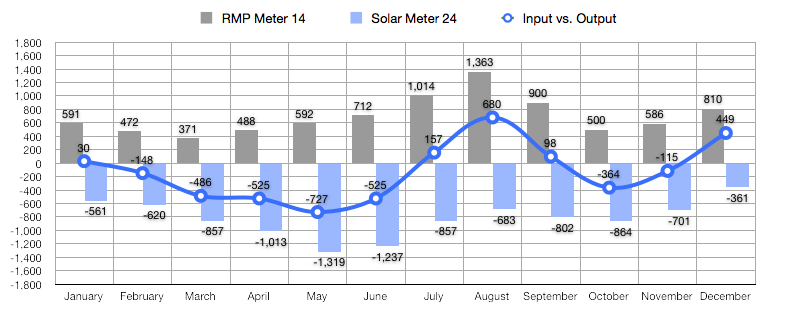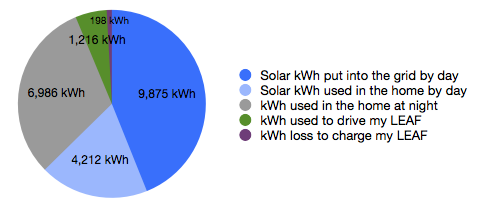wsbca said:
QueenBee said:
hill said:
Nice! I often wondered what kind of increase our PV might have on trackers - but with the high efficiency systems now available, the folks we talked to all seemed to coroborate e/other - that the expense of install/equipment/maintenance is outweighed by the ever shrinking benefit of increased production. Hard to imagine.
From the research I did there isn't any good way to track on standard residential roof installations. The added complexity of maintenance, lifespan, and cost is probably not worth it even on pole mounted installations. Up here though tracking can add an additional 25%. Using PVWatts you can see how the different variables like this, tilt, orientation, etc. affect output.
I wonder if there are pole or ground mounted arrays that support some sort of relatively inexpensive 'macro' tracking, ie you permanently aim it south (in the northern hemisphere), but then manually adjust the angle seasonally to generally point more directly at the arc of the sun through the sky. Seems like it would be drastically cheaper than having motors etc - just some extra holes in the mount and some time to move a bolt. Or are the cells not sensitive enough to such a modest level of variation in the perpendicularness to be worth even doing it once a month? It seems that the change in our production from summer to winter is due in some part to the worsening angles, not just the length of the day - but I could be wrong about that.
I don't use auto-trackers because the cost is very high. My understanding is that trackers aren't really cost-effective although I do have an off-grid friend who uses them. (She says that hers have issues that can make them a problem.) On the other hand, my solar panels aren't remotely cost-effective, so ultimately it comes down to how much one wants to spend.
However, one reason I like my pole mounted panels, besides not having to put holes in my precious roof or lines through my attic, is that I can adjust the pitch of my panels ten times a year to optimize production. Standard pole mounts have holes in them for 15º, 25º, 35º, 45º, 55º, and 65º. 15º is just about perfect for the months surrounding the summer solstice at my latitude (38ºN) and 65º is just about right for the months around the winter solstice. "Perpendicularness" does matter in my experience. The other thing that matters is temperature, cold panels produce a lot more electricity than warm ones, for a given solar input. And my sense is that pole mounted panels will stay cooler than roof mounted ones, although that's just a guess. It is also much easier to pull snow off—or wash dirt off—my pole mounted panels than it would be for roof mounted panels (I use a window squeegee on a long painter's pole).
Years ago when I put in my first array I wrote a spreadsheet that calculated and plotted the angle of the sun at solar max on each day of the year. I then used the data to choose times of the year to make the angle switches and a calendar program to remind me. I've tweaked them since and find that low angles in the spring and summer and high angles in the fall and winter work best, so I tend to move through the available pitch angles quickly around the equinoxes. [If you've ever seen that figure 8 shaped
analemma on a world globe you may have noticed that the sun angle changes quickly at the equinoxes and slowly at the solstices.] My next pitch adjustment, to 25º, will be on August 19th. The picture upthread shows my panels at 15º and my avatar to the left shows them at 65º.
On the subject of production: July was pretty cloudy here and my production was down 10% from last year on my old array and was the lowest in the four years I have been keeping track.















